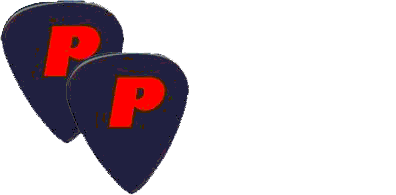Recording in Leon Russell’s Bathroom
Like most artists and studio musicians who worked mundo much in the mid-‘Sixties, Leon Russell was building a recording studio in his home in order to pursue personal musical interests. And, also like many of his associates’ projects, his was a work in progress. Whatever it was, I was thrilled to the marrow to be asked to do a demo there.
Joe Osborne recruited me. Joe was riding as high as a Fender Bass player could in the ‘Sixties and ‘Seventies LA recording scene. He was part of the Wrecking Crew, a studio-musician mafia of a dozen or so guys and one woman (bass guitarist Carol Kaye), who played the songs that made the cash drawer ring. Joe anchored hits by the Mamas and the Papas, the Carpenters (whom he discovered), Simon & Garfunkel, the Fifth Dimension, the Association, Sonny & Cher, Ricky Nelson, and on and on, ad nauseum. Later he went to Nashville and became part of Jimmy Buffet’s success machine.
Anyway, Leon Russell’s studio: it was located in North Hollywood, where many LA music people lived. His place was pretty much your basic post-War San Fernando Valley digs: 1½-storey sprawling, pink stucco California ranch, well-tended landscaping, etc. That was outside. Inside was a different story.
There was almost no furniture in any of Leon’s rooms, bare wood floors, shades or blinds but no curtains on the windows-and cables. Cables ran everywhere in the house, thru every room, hallway and alcove, up and down stairs and molding, across patios-everywhere. And recording equipment and soundproofing, some installed, most piled any place you couldn’t get around with a guitar or amp, so you walked outside the house with your axe and your equipment and came back in through a different door.
Note: This is almost always the case with musicians’ home studios, which is why their owners/producers give you guided tours of them where you learn what walls are coming down, where control rooms and vocal booths are going to be, etc., etc.
This is what made recording at Chez Leon so, um, challenging, because until these alterations were made, we had to play and record wherever there was space for it-and not necessarily contiguous space, i.e., we played and recorded in different rooms. Drummer Toxy French got the dining room as I remember, and Joe the entry hall. Guitarist Mike D’Acy was in a den or something, and Leon was in his living room with his grand piano, a funky piano and bunch of electronic keyboards, maybe a Hammond B3 and/or Fender Rhodes or Farfisa Organ or Clavinet, whatever.
And where was the recording booth, you ask? In the kitchen, where else?
But I’ve saved the best for last: I, with my Martin D-28 acoustic dreadnought, got the downstairs guest bathroom. Leon and Joe told me this was really the plum isolation space, because of the acoustics. I, of course, was stunned by my good fortune, and was determined to play my ass off. You have to admit, I was in the right place to do that.
Anyway, we were all patched directly into the board (i.e., recorded electronically, not acoustically, except for me and Toxy, who were taken with mics), could hear each other and the mix thru headsets but couldn’t see each other. I don’t know what it was like for them, but for me it seemed like maybe trying to fly an airplane from solitary confinement.
When we finished a take we’d all leave our rooms and go into the kitchen where we could hear it back over the monitors and talk about it. Then we’d all go back to our rooms and try it again. I don’t remember exactly, but it seems we got it in about four or five takes, including one where I had a clam and had to be punched in before it became a keeper.
No, I don’t remember what the title of the song was, who or what group it might have been for or anything else about the piece itself. I doubt if anything happened with it, because if it had I probably would have been called back to play on the final, though not necessarily. The studio recording business has never been known as a hotbed of scruples.
Nonetheless, it was a thrill for me. The best part was going into the kitchen/control booth to huddle with Leon and Joe and the other guys about what changes we could make to improve the “product.” I doted on these guys, took in their every utterance. I cannot forget Mike D’acy coming in and saying one of his kids had just had a birthday. “What’d you give him?” someone asked. “I gave him the sun,” D’acy said. How cool is that?
Before I left Leon’s studio I looked around for a souvenir. I decided on a solid, cast-steel, quarter-inch tape-splicing block, because it was small enough to put in my pocket and it made a great feeling piece. I told myself it was because I probably wouldn’t get paid for the session (tho’ it turned out I did). But mainly, I took it because I wanted a souvenir of the occasion. And, of course, I really needed the block for my recording studio which was finally starting to take shape, even though a lot of walls still had to be moved.
One-liner notes:
Mike D’acy, a star player in the 1960’s California psychedelic studio scene, telling other session players about his kid’s birthday: “My son was six years old today. I gave him the sun.”


